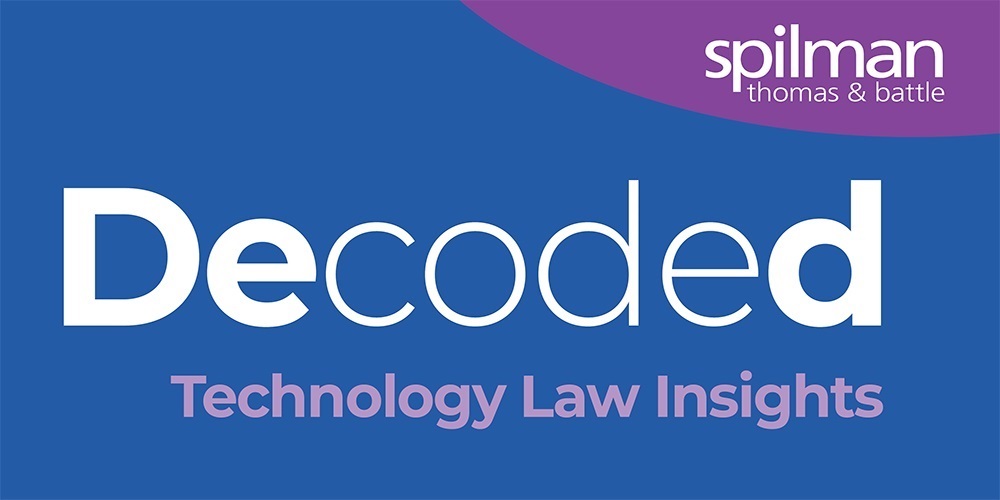Article
Resources
Article
Supreme Court Rules in Google’s Favor in Copyright Dispute with Oracle Over Android Software

After the Supreme Court's April 6 decision in Google LLC v. Oracle America, Inc., 141 S.Ct. 1183 (2021), the computer software and programming industry can breathe a tentative sigh of relief and perhaps sleep more soundly. This case, lasting more than 10 years and going two rounds through the District and Federal Courts of Appeal, has been the focus in an ongoing battle over the scope of copyright protection and fair use for software interfaces and their underlying code.
At the heart of this battle was Google's decision to copy part of the code for the Java SE platform, while it was designing the Android platform. This code portion is a part of the Application Programming Interfaces ("APIs"), which allow programmers to call upon prewritten tasks for use in their own programs. The API code can be broken down further into two categories: implementing code and declaring code. Implementing code does much what its name suggests: it tells a device how to execute a desired task. The declaring code serves to link programmers’ input to the part of implementing code needed to execute a specific task. One way to think of how the declaring code acts is as a filing system with markers to quickly call up the desired parts of the implementing code.
Google initially sought a license of the entire Java SE platform, now owned by Oracle, but negotiations fell through. Google then proceeded with writing its own implementing code, but copied the 11,500 lines of code that comprised the declaring code. According to Google, this was necessary to allow the millions of programmers already proficient in Java programming to bring their baseline, fundamental programming knowledge to work in the Android environment.
Obviously recognizing the important ramifications of this case, Justice Breyer, writing for the majority, makes clear that "[g]iven the rapidly changing technological, economic, and business-related circumstances, we believe we should not answer more than is necessary to resolve the parties' dispute." 141 S.Ct. at 1197. The majority opinion therefore chooses not to answer the question of whether copyright protection is afforded to the API code by assuming "purely for argument's sake, that the entire Sun Java API falls within the definition of that which can be copyrighted." Id. Instead, the opinion focuses on whether Google's copying was a fair use and concludes that it was.
In proceeding through the fair use analysis, however, the majority's opinion makes clear that a distinction exists, at least for six of the current Justices, between the implementing code and the declaring code portions of the overall API code. Justice Breyer likens the entire API code to a novel and describes the implementing and declaring code portions as the novel’s constituent parts. As the implementing code can be written any number of ways to achieve its function, and Google did indeed write its own implementing code for Android, this portion is akin to the text of the novel and worthy of stronger copyright protection. The declaring code is best likened to the organizational material within the novel; the table of contents, indices, etc. In the majority's view, it is important to realize that Google copied only 11,500 lines of code out of a total of 2.86 million lines. Moreover, the majority declared that Google copied these lines of code "not because of their creativity, their beauty, or even (in a sense) because of their purpose." Id. at 1205. Instead, the majority viewed the copying as taking no more than was necessary to create new expression and therefore further the overall purpose of copyright.
For the majority, the purpose of copyright and patents as set out in the Constitution guided their decision: "promote the Progress of Science and useful Arts, by securing for limited Times to Authors and Inventors the exclusive Right to their respective Writings and Discoveries." U.S. Const., Art. I, §8, cl. 8. Limits on the extent of copyright protection, most important to this case being the concept of fair use, were enacted to minimize negative consequences stemming from copyright. Viewed through this lens, the majority determined that Google engaged in fair use by copying only the necessary portion of the API code to achieve its goal of creating a new and unique smartphone platform to which millions of programmers could bring their baseline knowledge and skills to work.
While this decision does not settle the issue of whether certain types of code, such as the declaring code, are entitled to copyright protection, it does provide a clear picture of how a current majority of the Justices will consider such questions of fair use in the context of copyrighted code. Perhaps the most important part of this opinion is that it demonstrates that a current majority of Justices endorses the concept of distinguishing between types of computer code and determining whether certain types of code are entitled to strong or thin copyright protection. As Justice Breyer put it, "the declaring code is, if copyrightable at all, further than are most computer programs (such as the implementing code) from the core of copyright." Id. at 1202. Many in an industry where it is common practice to re-use and re-implement what came before certainly will see this as a victory in itself.


